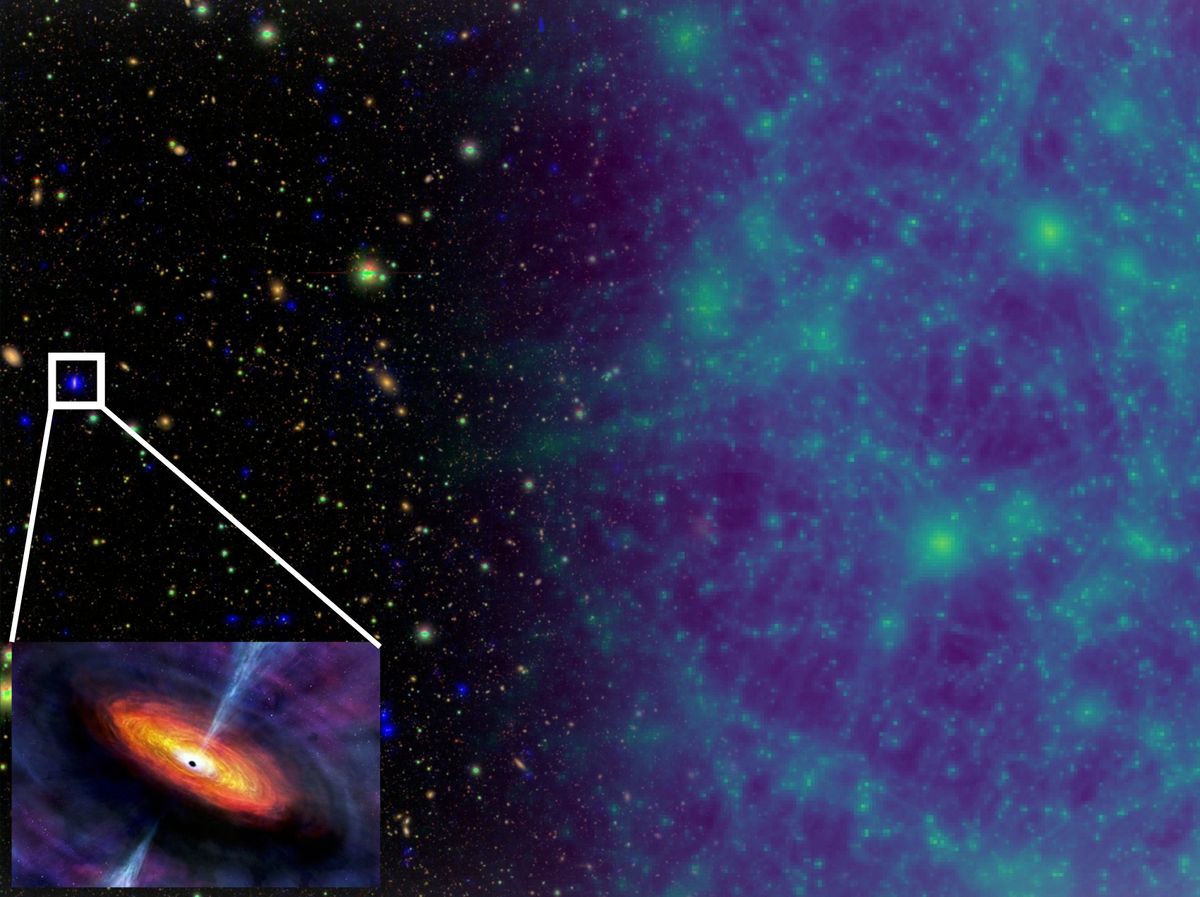The dark hearts of galaxies have been shown their almost complete history for the first time, as astronomers combined X-ray observations with detailed supercomputer models to chronicle the growth of supermassive black holes over 12 billion years of cosmic history.
By doing so, scientists have shown that the black hole at our core The Milky Way Galaxy reached its four million solar masses relatively late in its history.
Supermassive black holes range from millions of times larger than our sun to billions of times more massive, but their origin is unclear and how they grew to such large masses has been a challenge for astronomers to understand.
Now, however, astronomers Fan Zou and W. Niel Brandt, both of Penn State University, have led a team that linked the two black hole growth mechanisms from observations and simulations. Finally, the results may provide some answers.
Connected: NASA Telescope Spots ‘Cosmic Fireworks’ and Faint Echo from Milky Way’s Supermassive Black Hole
“A very big question is how do these supermassive black holes get so massive?” Zou said as presenting their work at the 244th meeting of the American Astronomical Society in Wisconsin. “To address this, we need to trace the overall growth history of these supermassive black holes.”
As mentioned, black holes grow through two main mechanisms. One is through the accretion of cold gas from their host galaxy. This gas forms an accretion disk around the black hole itself, and matter from the disk gradually spirals toward the black hole’s core. The accretion disk can grow so dense that the friction between gas molecules causes it to heat up to millions of degrees, emitting X-rays in the process. The other mechanism occurs during galaxy collisions. When this happens, not only do the galaxies merge, but their supermassive black holes also eventually merge and release an explosion gravitational waves.
Chasing cosmic voids
To estimate how much accretion of gas contributes to the growth of supermassive black holes, the research team searched more than 20 years of archival data from NASAS ‘ Chandra X-ray Observatoryof the European Space Agency XMM-Newton mission and eROSITA X-ray instrument on joint German-Russian board Spektr-RG spaceship. The researchers were able to identify X-ray signals coming from about 8,000 rapidly accreting supermassive black holes.
“When supermassive black holes accrete the surrounding gas, they emit strong X-rays, so by detecting them in the X-ray bands, we can measure their accretion power,” Zou said.
Then they turned to him IllustristTNG cosmological supercomputer simulation to model galaxy mergers throughout cosmic history. From there, the team combined X-ray data showing growth through accretion with the results of simulated mergers to understand how and when supermassive black holes grew over the past 12 billion years, from 1.8 billion years ago Big Bang until today.
These simulations “capture the overall large-scale structure [of the universe] but are also able to probe individual galaxies,” said Zou.
History of supermassive black holes

Zou and Brandt found that X-ray data show that accretion has been the dominant driver of black hole growth throughout all epochs of cosmic history. Furthermore, the more massive the galaxy, the faster the supermassive black hole within it grew from accretion. Mergers, on the other hand, are less prominent drivers of black hole increase according to the simulations, but may still have some impact.
“Accretion dominates the supermassive growth of black holes in most cases, and mergers make some notable secondary contributions,” Zou said.
These results also show that supermassive black holes grew faster earlier in the universe, with new ones appearing frequently. However, by about 7 billion years ago, the total number of supermassive black holes had more or less decreased with the formation of a few new supermassive black holes. Mergers had a greater impact on later history, peaking in their importance for the growth of black holes about 4 billion years ago.
“We found it once UNIVERSE reaches about 40% of its age, the overall demography of supermassive black holes is very similar to the demography of supermassive black holes we see in the local universe,” said Zou.
Astronomers even specifically modeled our galaxy’s black hole, Sagittarius A*and concluded that most of its matter grew relatively late in the cosmos time. This growth would have been primarily through accretion, with most mergers of the Milky Way with other galaxies occurring over 8 billion to 10 billion years ago. However, to European Space AgencyS ‘ The Gaia mission THERE recently discovered evidence for a dwarf galaxy that collided with the Milky Way just 2 billion to 3 billion years ago. Dwarf galaxies are thought to contain intermediate-mass black holes, tens to hundreds of thousands of times the mass of our sun, and it is possible that one could have merged with Sagittarius A* to increase the mass of our black hole.
Because the results only take us back 1.8 billion years after the Big Bang, they do not describe how the seeds for supermassive black holes first formed. This remains a problem for cosmologists, especially as Hubble Space Telescope AND The James Webb Space Telescope i found surprisingly massive black holes much earlier in the history of the universe. How they grew up to be millions of times the mass of our sun in less than a billion years is currently unknown.
A paper describing the findings was published in March in The Astrophysical Journalwith a second letter pending.